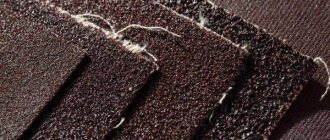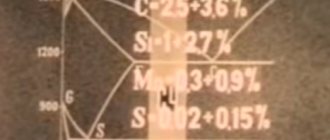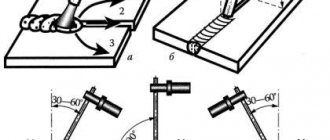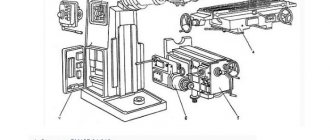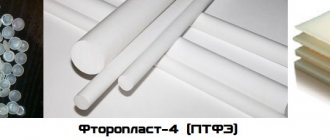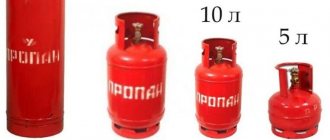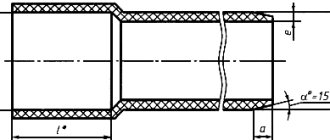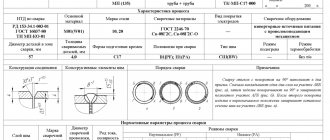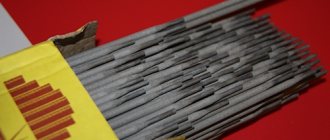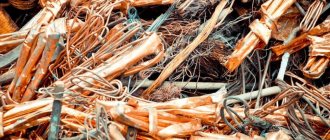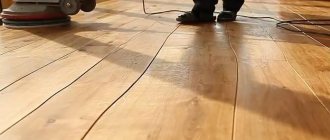What is sandpaper
Emery, sandpaper (or just sandpaper), sandpaper, abrasive or sandpaper - these are all names for the same material. This material is an abrasive on a flexible basis for manual or machine processing of various materials. There is sandpaper for metal, wood, plastic, glass. They are sometimes used for processing plaster and putty, but for these purposes a sanding mesh may be more convenient. It doesn't clog like that.
Sandpaper, sandpaper or paper, sandpaper, sandpaper - that's all about this material
Sandpaper abrasives are small particles of hard materials of varying sizes. These particles are called grains, and their size is called grit. They are glued to a flexible base. Sanding/abrasive paper-based sandpaper is more common. This is the cheapest type, but not the most durable. The fabric base is more reliable, but can stretch, which is also not always convenient when working. Polyethylene-based emery is a waterproof sanding material. This is the most expensive type, but you can even work in water. For wet processing, sanding on waterproof paper is also used.
Sandpaper is used for processing metal, wood, plastic, glass
Sandpaper is used to eliminate irregularities and defects, to obtain a smooth surface, grinding and polishing. So sanding can be rough or fine. By rough we mean the removal of paint or rust, burrs, and the initial leveling of the surface. For this work, material with coarse (from 500 microns to 1 mm or more) and medium (from 200 microns to 500 microns) grains is used. Obtaining an even and smooth surface - grinding, polishing - is already a fine or finishing treatment. For this type of work, sandpaper with fine grain (less than 200 microns) is used.
Sanding wood with an orbital sander
An orbital sander allows you to sand large flat surfaces and hard-to-reach areas. Ideal for soft wood, no dents or protrusions. For example, it works well on countertops and door surfaces. You can sand corners with the machine because it has a sanding foot.
Ideal for amateurs - it's easy to check. It uses an oscillating motion, works calmly and gently, so that the novice user will not damage the sanded surface.
When choosing an orbital sander, remember that the larger the sanding pad, the faster and more efficient the work. Don't go overboard with the size, as a larger tool reduces the room you have to maneuver when working on a smaller, more difficult-to-reach surface. The small triangular shaped foot makes it easier to work in areas that larger sanders cannot reach. Due to their ease of use, such models are recommended for buyers with less experience.
You can choose abrasive discs with different grinding power for your orbital sander. When working with hard and durable wood, choose blades with a coarser grain. Finer granulation will be beneficial for delicate materials and finishes.
Release forms and types
Our usual form of release is in rolls or sheets. The sheet can be based on cardboard, or it can be on thick paper. Most often it is more rigid than rolled. Roll sanding is most often used on belt sanding machines, and for manual use too. In addition, there are the following types of abrasive materials:
- Abrasive wheels. Used for installation on attachments for special machines. These can be grinders, drill attachments, angle grinders. There are different types: Regular circles of different diameters and different grain sizes.
- With Velcro glued to the back.
- Petal ones are when strips of sandpaper are glued to the base. Can be of different grain sizes. They are used for rough processing of metals (usually) and for removing paint (including from concrete).
Abrasive sanding paper is available in the form of sheets, rolls, tapes, and wheels. There are other forms - for attachments to instruments
There are also sanding sponges. This is an abrasive that is applied to polyurethane foam. This type of abrasive is used to smooth surfaces with grooves, threads, and recesses. Abrasive particles can be applied to one, two or four sides of the sponge. May be the same size or different. But usually, this is a fine grain, just of varying degrees of “fineness”. Sponges are more convenient because they can take any shape; in addition, they can be washed to remove dust and dried. The number of washes is not limited. They do not suffer from washing; they can be used while the grain is still intact. And this depends on the quality.
Hardness and other parameters
Circles are generally classified as soft, medium and hard; These are the main types, to which various epithets are already added. For example, the following are officially known:
- extremely soft;
- very soft;
- medium hard disks.
Additional numbers from 1 to 3 are applied to these brands. To sharpen a tool manually, you need a C1 or C2 abrasive. It is important to understand that the hardness of abrasive wheels can mean different things. In one case, this is the stability of the fastening of abrasive grains in the overall assembly (that is, the resistance of the ligaments to the ejection of grains under mechanical stress). Another is the suitability of the particles used to penetrate other materials.
According to the first option, the hardness of the discs is increased, strengthening the ligament. The total pore volume is reduced, but this does not affect the distances between abrasive particles. A 1.5% increase in bond is considered to add 1 level of hardness. Advanced bonding systems are very tear resistant. They are able to work even at a very high frequency of disk rotation - noticeably higher than the most powerful household drill can provide.
According to GOST 1972, the hardness of abrasive devices is precisely the resistance to tearing out grains under an external impulse. Testing is carried out using 3 key methods:
- according to the depth of the hole, knocked out with a stream of quartz sand;
- by the efficiency of pressing a hardened steel ball under a certain load;
- by drilling a hole to a given depth with a drill of a special design, which is subjected to stable pressure (the key indicator is the required number of turns of the drill to achieve the result).
In some cases, professionals use a TKN device (that is, a cone hardness tester). To operate, its active part is heated to 100 degrees. Then the cone is pressed into a circle. The key parameter is the depth of entry. The hardness of the disc directly affects the grinding process. The soft attachment is suitable for finishing fairly hard materials. However, peeling requires the use of more durable products. Steel that has not been hardened, as well as cast iron, can be processed with a wheel of moderate hardness.
Types of sandpaper grit
As already mentioned, sandpaper grit is the size of the abrasive fragments. They are measured in micrometers. The smallest grain found in sandpaper is only 3-5 microns, the largest is 1000 microns (this is 1 mm). Based on grain size, fine-grained and coarse-grained abrasives are distinguished.
Usually we are only interested in the grain size or grit of the sandpaper
Russian standards
In order to be able to understand what specific material is in front of you, the dimensions of the abrasive grain are indicated in the marking. But things are not so simple with her. During the USSR, GOST (3647-80) was introduced, the designation according to which still exists, although in 2005 a new standard was introduced (GOST R 52381-2005), which was developed on the basis of pan-European standards. The difference between the old and new GOST is significant.
This marking method is used in some countries of the post-Soviet space.
- According to the old standard, the minimum grain size is prescribed. That is, the higher the number, the larger the grain. But we must keep in mind that some of the grains are smaller. In addition, the markings (letter designation) for large and small grains are different. It's worth remembering. For coarse-grained sandpaper , the grain size of the sandpaper is indicated in microns , and after it the letter N is written with a hyphen in front of it - “N”. For example, 63-N . This means that the minimum grain size on the sandpaper will be 63 microns or 63 micrometers (µm). But there will also be larger particles. How much bigger? Slightly smaller than the previous brand. In this case, only 80-N is larger than 63-N, that is, the grain will be slightly less than 80 microns. The second example is 6-H. The grain size is no more than 6 microns or 60 microns, and the largest ones will be no more than 80 microns (since the previous grade is 80-N).
| Marking of sandpaper grain according to GOST 3647 | Marking ISO 6344 (GOST 52381-2005 Russia) | Grain size in micrometers (µm) | Scope and types of work |
| 80-R | P22 | 800-1000 | Rough processing of steel, other metal, wood, removal of rust, burrs |
| 63-N | P24 | 630-800 | |
| 50-N | P36 | 500-630 | |
| 40-N | P40 | 400-500 | Rough woodworking, primary wood sanding |
| 32-N | P46 | 315-400 | |
| 25-N | P60 | 250-315 | |
| 20-N | P80 | 200-250 | Smoothing, Primary grinding. Plaster, wood, metal |
| 16-N | P90 | 160-200 | |
| 12-N | P100 | 125-160 | |
| 10-N | P120 | 100-125 | |
| 8-N | P150 | 80-100 | Removing paint, sanding metal and softwood, preparing for sanding hardwood |
| 6-H | P180 | 63-80 |
- When marking fine-grained sandpaper, the grain size is indicated in micrometers , and after the number they put the letter “ M ” (without a hyphen). Example: 14M. This means that the maximum grain size of sandpaper is 14 micrometers, but there are also finer grains up to 10 microns in size.
| Sandpaper marking according to GOST 3647-80 | Sandpaper marking ISO 4344 (GOST 52381-2005 Russia) | Sanding paper grain size in micrometers (µm) | What kind of work should I use it for? |
| 5-N or M 63 | P240 | 50-63 | Leveling before painting and beginning hardwood sanding |
| 4-N or M 50 | P280 | 40-50 | |
| N-3 or M 40 | P400 | 28-40 | Final leveling for painting, sanding wood |
| N-3 or M28 | P600 | 20-28 | |
| N-1 or M20 | Р1000 | 14-20 | Sanding metal, plastic, ceramics, wet finishing until wood is smooth |
| M14 | P1200 | 10-14 | |
| N-0 or M10 | Р1500 | 7-10 | Ultra-fine polishing of metal, finishing of plastic and wood to gloss |
| N-01 or M7 | P2000 | 5-7 | |
| N-00 or M5 | Р2500 | 3-5 |
As you can see, it's already quite confusing. It is also worth saying that according to the old standard, fine-grained emery can have a double designation - with the letters M and H - as in the table. Moreover, more often the options in microns were in use. Therefore, the smallest grain - 5M or 00-N - is often called zero. This is because it is 3-5 micrometers in size. According to rounding rules, this can be considered zero. This is where the name came from.
Compliance tables for other countries
As we see, the situation is not simple. And there is also the American ANCI (USA and Canada), the European FEPA or its other name ISO 6344, the Japanese JIS and the Chinese GB2478. Moreover, on the market you can find material from almost all these countries/parts of the world. So it is advisable to have at least some data. The most common ones are shown in the tables.
Grit designation table for different standards: coarse grain
Sandpaper grit according to different countries' standards: fine-grained
Please note that next to each column the grain sizes in micrometers (µm) are written. Sizes vary. This may be important for work.
Types of sandpaper
So, modern sandpaper for wood differs in the following characteristics:
- abrasive;
- Purpose;
- Method of applying abrasive;
- Grain;
- Place of manufacture, since some of its performance qualities depend on this;
- Water resistance.
Below we will take a closer look at all its types.
Pomegranate sandpaper
Types of abrasive
Natural emery is the result of mixing magnetite with corundum. However, in modern conditions these materials are practically not used. The most common types of abrasives are:
| Type abrasive | Peculiarities |
| Electrocorundum | The toughest type of skin, which has excellent cutting ability and resistance to pressure. This abrasive is produced by reduction smelting in a charge. |
| Silicon carbide | It is very sharp, but at the same time fragile grains that crumble under pressure. This abrasive is obtained from an alloy of graphite and silica. This type of skin is often used for processing metal and plastic. |
| Pomegranate | A rather fragile abrasive, but at the same time allowing to obtain a perfectly smooth surface. Therefore, it is often used for wood processing. |
| Diamond | It is the hardest and most durable type of abrasive, but at the same time its price is very high. Therefore, this sandpaper is not used for processing wood. |
Silicon carbide skin
Application technology
Some performance properties of the skin depend on the method of applying the abrasive.
Currently, the following methods are most often used in production:
- Mechanical application - under the influence of gravitational forces, particles are applied in a chaotic order to the canvas.
- Electrostatic method - negatively charged particles in an electrostatic field are attracted to the adhesive base. The peculiarity of this method is that the sanding layer is very sharp.
- With the help of binders - a material that is more durable than an abrasive serves as a binder between the blade and the sanding layer.
- Using adhesives and resins - often the latter have anti-dirt and antistatic additives that increase the durability of the skin.
In the photo - coarse sandpaper
Grain
Based on the density of grains per square inch, or, more simply, the grit size, sandpaper is divided into the following types:
| Grain | Application area |
| 40-60 | Large grains located far from each other. This type of sandpaper is used when performing rough work. |
| 80-120 | Used to remove minor irregularities. Therefore, such sandpaper is also called smoothing sandpaper. |
| 150-180 | Used for finishing. |
| 220-240 | Used for grouting before painting. |
| 280-320 | Great for removing marks before painting. |
| 360-600 | Used for grinding. |
Thus, when choosing which sandpaper to sand wood, you should focus on the type of processing. However, in any case, fine sandpaper is not used for processing wood, as it quickly becomes clogged.
Marking
The marking depends on the country in which the sandpaper is made, since each country has its own system-forming basis.
The following foreign groups are distinguished:
- Japan;
- USA;
- Canada;
- China.
In addition, there is a generally accepted FEPA standard, which corresponds to the Russian standard. This system is based on the designation of the number of grains, which can be from 12 to 5000. The more grains, the less grainy the skin is.
For example, sandpaper P22/24/36 is intended for roughing, as it contains large grains, and wood sandpaper grade P240/280 is used for sanding wooden surfaces. Sandpaper grade P2000/2500 is used for polishing paint and varnish coatings.
Waterproof skin
Water resistance
Another important parameter of the skin is water resistance. It should be noted that moisture-resistant sandpaper is often used for woodworking in industrial settings, in particular for making furniture.
This consumable also has increased elasticity due to the use of a fabric base and special resins. Experts recommend soaking it in water for some time before using it. However, it should be borne in mind that the instructions for using sandpaper largely depend on the type of operation being performed.
Waterproof sandpaper is sold in grain sizes ranging from P80 to P2000. Those. it can be used at all stages of surface treatment.
Here, perhaps, are all the main types of sandpaper, after familiarizing yourself with which you can choose the most suitable sandpaper for performing certain types of woodwork.
Sandpaper markings
Sandpaper marking is a set of letters and numbers that encodes complete information about the type of base, abrasive, application method, composition and grain size. We have already looked at graininess. This parameter appears at the end of a series of letters and numbers. It’s more or less clear with him. In general, sandpaper markings display the following data (starting from the first character):
- what material is the grain made from?
- skin base;
- binder with which the grain is glued to the base;
- methods of applying grain;
- type of base (paper or fabric);
- water resistance (if not waterproof, there is no symbol);
- sandpaper grit.
Marking of sanding paper
Let's look at the other characteristics that are encrypted in the marking. The letters here are in Latin. Let's take an example of what the following marking means: KK19XW. So:
- first K - type of abrasive - normal electrocorundum;
- second K - base - cotton fabric;
- 1 - two-layer application of a binder (resin + resin).
- 9 — type of application is unclear;
- X - textile type - hard.
- W - indicates that the material is waterproof.
Next should be the letter P and numbers that determine the grain size of the sandpaper.
Types of abrasive
The first letter in the marking indicates the material from which the abrasive is made. It is the abrasive material that is responsible for how much effort must be applied during processing. The stronger it is, the longer you can work with one piece of sandpaper. Unfortunately, the rule here is true: the better, the more expensive.
- K - “normal” electrocorundum. The abrasive is brown in color (shades may vary). The most common and relatively inexpensive material.
- C—silicon carbide. Very durable material. It does not wear off for a long time and clogs little. For processing glass and plastic, for finishing metal polishing.
Types of sandpaper. They differ not only in grain size, but also in the material from which this grain is made. - G—zirconium electrocorundum. It has a brick-red color due to the addition of zirconium. It is characterized by increased wear resistance, but is more expensive than the “usual” one.
- A - alloyed electrocorundum. It has a titanium additive, which gives it a blue color. Perhaps the most durable. Recommended for grinding difficult-to-process materials.
- V - white electrocorundum. It is distinguished by its white color due to the large amount of aluminum.
- S - ceramic electrocorundum.
If, looking at the photo, you decided that the emery was tinted, then in vain. Different colors are given to it by various additives used in the manufacture of abrasive substances. Another thing is that most often we see brown, gray or dark gray sandpaper for sanding. They are simply the cheapest and most popular.
Types of base
The base of the sanding paper is the material on which the abrasive is glued. This material determines the degree of flexibility and resistance to deformation. It also depends on the base whether this type of sandpaper can be used for dry or wet sanding.
In the marking, the type of base is encrypted by the second letter.
- Woven base. The fabrics are woven from cotton and synthetic fibers: K - cotton fabric. High strength, wear resistance, not afraid of getting wet. The disadvantage is that it can lengthen during operation. This is bad for belt sanders.
- X - polyester textile. Compared to cotton, it is more wear-resistant. Used for the production of tapes of various widths. The base is dense. It can stretch slightly when inserted into grinding machines and does not deform for a long time.
Emery cloth - sandpaper on a woven (textile) basis - Y - synthetic. Used in the furniture industry for polishing wooden panels. Withstands very heavy loads.
- J - elastic cotton fabric. Used for processing minor relief.
- JJ or F - cotton fabric with increased elasticity. These types of base are for narrow belts and for processing deep relief. They stretch and bend very well.
- A - density 90 g/m², B - 110 g/m². For chalk whom grains. Flexible, bends well o makes finishing easier.
Sandpaper is another name for sandpaper.
C - density 125 g/m², for medium-sized abrasive. This type is the most popular. Can be in the form of rolls or thin sheets.
If we talk about the base, then the cheapest sandpaper is paper based. It is usually used for manual processing or mounted on a hand holder. For sanding machines, a woven base is often used. But cotton or polyester is your choice. Who likes what more?
Binder
In the third position in the marking of the sanding paper there is a number that encodes the method of fixing the abrasive to the base. They use glue or polymer resins or combinations thereof. The glue “adheses” well to the abrasive and the base. Single-layer application of the binder (number 2 in the corresponding position on the marking) is used where the emery is not subject to heavy load.
Methods for gluing abrasive to a base. Glue or resin is used, their combinations in different orders
To hold the grains more firmly, a second layer is poured over the glue. Most often this is a resin (phenolic or any other). The result is a bundle - glue + resin (number 3 in the marking). The second layer of binder makes the sandpaper more resistant to abrasion.
There is another option - resin + resin (this is 1 in the encoding). That is, both the first and second layers are made of bakelite resin. The cost of this option is higher, which determined its area of use - production.
Method of applying and pouring grain
There are two ways to apply grain to the primary binder layer: free and electrostatic. When free, abrasive particles simply pour in. They lie in a free order, their direction is random. With the electrostatic method of filling grain, the paper is passed through an electric field. As a result, the grains have the same orientation, which makes the surface rougher.
Abrasive is applied in different ways
In addition, there are two types of grain filling: open and closed. They differ in the number of particles per unit area. When the backfill is open, the sharp fragments are located at a distance from each other, and the base is visible (open). This paper is good when working with loose materials. For example, with wood. Wood dust wakes up, the abrasive does not clog.
The closed backfill of grain on sandpaper is denser. The abrasive particles lie next to each other, the base is practically closed and cannot be seen. This type of sandpaper is good for hard materials (steel, for example).
Brands of types and sizes
One of the most popular types of grinding wheels are products based on electrocorundum in normal format. It is designated by numbers from 12 to 16 with an additional subsequent letter A. Advantages:
- excellent resistance to high heat
- excellent adhesion to binding components;
- Suitable for machining cast iron and wrought iron, conventional and chromium-improved steel.
If the type is designated as 22A-25A, there is the use of white electrocorundum. It is more homogeneous than the material of the previous group, while being somewhat stronger mechanically. Experts note the presence of sharp edges and the ability to self-sharpen. After processing with such a disk, the surface will be relatively uniform.
32A-34A are grades of chromium electrocorundum. It is suitable for handling weld surfaces made of special steel grades optimized by alloying components. Alternative names are technical ruby or electric ruby. Additionally, the following brands are available:
- 37A – electric corundum with titanium;
- 38A – zirconium circle, characterized by significant mechanical strength;
- 52-55C is black silicon carbide, which is harder than regular carbide, but often loses due to fragility.
The following markings are accepted for diamond blades:
- AC2 is the standard strength for such instruments;
- AC4 – durable products;
- AC6 – even greater strength;
- AC32 – monocrystalline diamonds.
Additionally, the following categories have been introduced into Russian standards and technical regulations:
- AC50;
- EPIRB1;
- ARK4;
- APC3.
The wear resistance of the diamond mass and its strength are achieved simultaneously with a decrease in fragility. Such structures are suitable for handling fragile as well as hard materials. Such equipment, however, can also be used for various operations with optical glass and for sharpening especially hard instruments.
What should be the grit of sandpaper for the job?
As you understand, different sanding cloths are used for different processing of materials. Now we are not talking about the form of release, but about the size of the grain and the method of applying it. The type of abrasive and method of application is of secondary importance. They have a greater impact on the durability of the material. But as usual, better means more expensive. Here everyone chooses for themselves. But it is better to select the grain size for specific tasks.
Sandpaper for sanding wood for painting: choosing a grain size
What sandpaper to sand wood
To prevent the skin from clogging, the grain should be applied at intervals. This is an open type of application. In this case, you won’t have to “knock it out” or change it often. Base type - paper or fabric. Paper is cheaper, fabric is more expensive. If you have a sander, check the instructions for it. For manual processing, you can fix the piece on a special holder or nail it to a block.
How to choose sandpaper grit for wood processing
Recommendations for choosing grain size are given in the table. For primary processing, sandpaper from P40 to P80 is used. This is giving shape, removing a thick layer. We use the same materials to remove varnish and paint from wood. To prepare wood for painting you need P100 to P240. For sanding after applying the first layer of varnish, use P360 or P400. And bringing it to smoothness - actually polishing and varnishing - is already very small P500 and above. In general, polishing is a separate topic, and there you need to sand and apply paint or varnish step by step. And each time the grain is taken finer and finer. And the polishing is completed with a generally soft polishing (felt) material.
What kind of sandpaper to use on metal?
To process metal, you will have to use harder, and therefore more expensive, abrasive materials. Regular corundum will cope with aluminum and its alloys. They also process cast iron, bronze and black steel. For brass you need at least zirconium, but preferably titanium or alloyed electrocorundum. And even better - ceramic. Please also note that the application method must be closed.
For grinding and polishing metal, you need a different type of sandpaper, and we select the grain size according to the type of work
The principle of selecting the grain size is the same: for rough processing, increased “roughness” of the coarse grain; the finer the processing, the finer the abrasive. To remove rust and level out the main roughness, use the coarsest sandpaper. The thinner the layer, the smaller the grain size. So everything is logical here. But note that for each type of work there are two or three grit sizes. This does not mean that you need to take any of the above. This means that to get a good result you need to process each size. Although, if appearance is not so important to you, then you can use one of the recommended sizes.
Sandpaper for plastic, stone, ceramics and glass
Regarding the type of abrasive and its application, the recommendations are the same: stronger, more dense. But sanding is recommended with water supply, so a waterproof modification of the sandpaper is required.
Sandpaper for plastic: choice of grit
For finishing plastic and glass, sandpaper even with the smallest grain - the same zero or P800 - will be too coarse. It will leave visible scratches. These materials are brought to smoothness using GOI paste and even finer grinding compounds. But this is a separate story and its own technologies.
Designation of abrasive and grit
It is most convenient to present and analyze the grain parameters of disks in the format of a special table. But here it must be said that these parameters may differ in different gradations, and sometimes it is impossible to find a correspondence. Thus, the categories of processing abrasives F4-F7 on the FEPA scale have no analogues. Grains 3/2 according to standard number 9206 dated 1980 and less do not have matches in standard 3467-80. Here is the table itself:
| Sign according to GOST 3647-80 | According to GOST 9206 from 1980 | Dimensions in microns | FEPA abrasives, except those with a flexible backing (the letter F is omitted from the designation) | Average value in microns |
| 200 | 2500/2000 | 2500-2000 | 8, 10 | 2460, 2085 |
| 160 | 2000/1600 | 2000-1600 | 12 | 1765 |
| 125 | 1600/1250 | 1600-1250 | 14 | 1470 |
| 100 | 1250/1000 | 1250-1000 | 16, 20 | 1230, 1040 |
| 80 | 1000/800 | 1000-800 | 22 | 885 |
| 63 | 800/630 | 800-630 | 24 | 745 |
| 50 | 630/500 | 630-500 | 30,36 | 625, 525 |
| 40 | 500/400 | 500-400 | 40 | 438 |
| 32 | 400/315 | 400-315 | 46 | 370 |
| 25 | 315/250 | 315-250 | 54, 60 | 310, 260 |
| 20 | 250/200 | 250-200 | 70 | 218 |
| 16 | 200/160 | 200-160 | 80 | 185 |
| 12 | 160/125 | 160-125 | 90, 100 | 154, 129 |
| 10 | 125/100 | 125-100 | 120 | 109 |
| 8 | 100/80 | 100-80 | 150 | 82 |
| 6 | 80/63 | 80-63 | 180 | 69 |
But simply determining the grain size of sanding and other discs is not enough. It is also necessary to look at what this classification means in purely practical terms. In descending order of size there are:
- grinding;
- grinding powder;
- micropowders;
- the finest possible micropowder.
Micropowders are designated by the symbol “M”. The index is not difficult to decipher. The number after the “M” shows what the largest particles are in this type of product. It is worth noting that, in addition to the main fraction, at each grain size number even larger, marginal, fine and complex fractions are clearly distinguished.
Large grains are designed for rough finishing of various types of coatings. The smaller cross-section allows for a final abrasive pass. It can also be used for finishing and sharpening. Coarse-grained discs are used to:
- peel and remove allowances with a significant cutting depth;
- work effectively on powerful machines;
- grind materials that close the pores of tools and provoke “salting”;
- work over large areas;
- grind the end flat;
- process products internally.
Wheels with small and medium grain are needed if:
- a coating roughness of no less than 0.08 and no more than 0.32 microns is relevant;
- you will have to work with hardened steel and other hard metals;
- grind and bring devices (devices) to final readiness;
- accurately and efficiently work on a variety of details.
Price
The price of this material relative to traditional analogues is affordable and amounts to about 150 rubles per liter container of the composition. When calculating the budget, it is worth taking into account the volume of the project and the time for its implementation. If you want to get a machined surface as quickly as possible, the choice of liquid sanding paper is obvious.
If time is of the essence and there is no requirement to maintain increased sterility in the room, then preference can be given to classic sandpaper. Otherwise, it is better to prefer its liquid counterpart.
Safety precautions
As with any other work, when using this material, you must follow safety regulations. This requirement is important, since the composition contains aggressive chemical components. In order not to harm your health, the material can be used subject to the following conditions:
- people in contact with the composition must be protected by respirators, gloves and special clothing;
- a ventilated room where work is carried out;
- After completion, the container with the solution must be carefully closed and all instruments used must be rinsed.
By following these rules, you can work with the material completely freely.
Pads and jaws
A block is an extremely useful device for manual grinding; its presence and proper use can speed up the process. The block, as a rule, is a regular wooden block wrapped in sandpaper. Its abrasive side should be on the outside, and the non-abrasive side should be attached to the block with a large stapler or PVA glue. Some hardware stores sell ready-made pads with sandpaper, that is, you don’t have to make it yourself, but just buy it.
Foamed polyurethane sponges are also used for sanding wood. They are more convenient to use than sandpaper, since you can wash them under water after work. Sponges and abrasive cloths are great for careful hand sanding of wood, allowing you to process the smallest details. They can also be used to sand primed or varnished wood.
Application area
The use of sandpaper is so wide and widespread that it is simply impossible to list all the areas.
But sandpaper is most often needed for the following types of work:
- Construction and finishing , leveling surfaces, removing old coating, eliminating build-up mortar build-up.
- Carpentry , leveling and sanding wood of varying degrees of softness.
- Car repair , abrasive work on the body, processing before painting, removing the old paint layer.
- Furniture production and repair , alignment and removal of splinters on wood and metal.
- Cleaning the seams between tiles is a quick and convenient way for final finishing after tiling work.
- Sharpening needles , an idea that will appeal to needlewomen and housewives.
- Renewing the surface of the cutting board must be done regularly, since the furrows from the knife formed on the wooden surface are a source of bacteria development.
